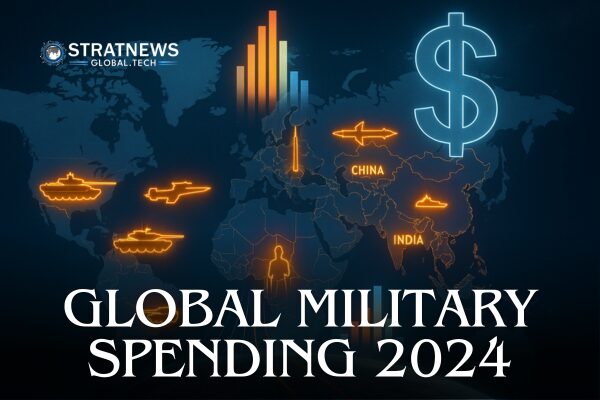Global Military Spending Hits Record $2.72 Trillion in 2024
World military expenditure surged to $2.72 trillion in 2024, marking a 9.4% increase from 2023, according to a report from the Stockholm International Peace Research Institute (SIPRI). This rise is the sharpest year-on-year increase since the end of the Cold War.
Rapid Growth Across All Regions
SIPRI’s data showed that military spending rose in every world region due to heightened geopolitical tensions. Europe and the Middle East saw particularly rapid increases, reflecting growing concerns over regional security.
“Over 100 countries around the world raised their military spending in 2024,” SIPRI reported. The organisation also warned that governments prioritising military security over other budget areas could cause long-term economic and social challenges.
Europe Leads in Military Spending Increases
Driven by the war in Ukraine and concerns over the US commitment to NATO, Europe’s military spending—including Russia—rose by 17%. Spending levels in the region are now higher than they were at the end of the Cold War.
Russia’s military expenditure grew by 38% in 2024 to an estimated $149 billion. This figure is twice the amount spent in 2015 and represents 7.1% of Russia’s GDP and 19% of its total government spending.
Ukraine’s military spending also rose, reaching $64.7 billion, a 2.9% increase. Although Ukraine’s total is only 43% of Russia’s spending, it accounts for a staggering 34% of Ukraine’s GDP—the highest military burden worldwide in 2024.
SIPRI noted that Ukraine now allocates all its tax revenues to defence. Maintaining or increasing this level of spending will be difficult given its limited fiscal space.
US Remains Dominant in Global Military Spending
The US military budget rose by 5.7% to reach $997 billion in 2024. This amount accounted for 66% of NATO’s total spending and 37% of all military expenditure worldwide.
The global rise in military budgets signals an era of increased prioritisation of defence, raising concerns about the future balance between military and social investments.
with inputs from Reuters


